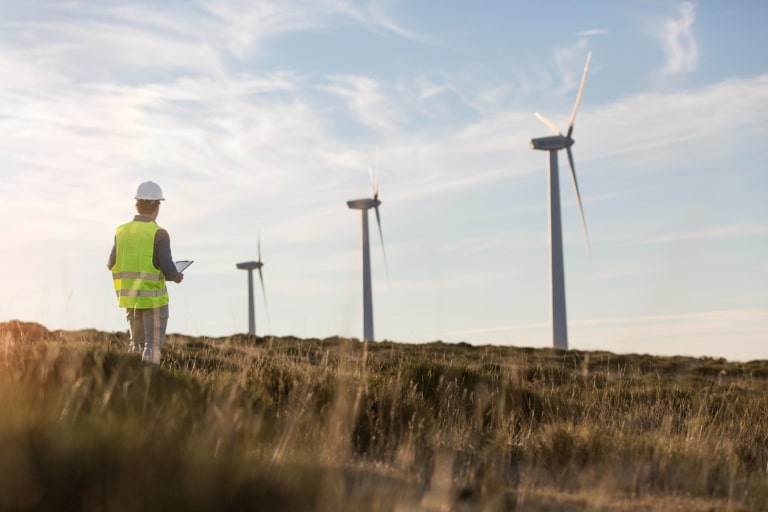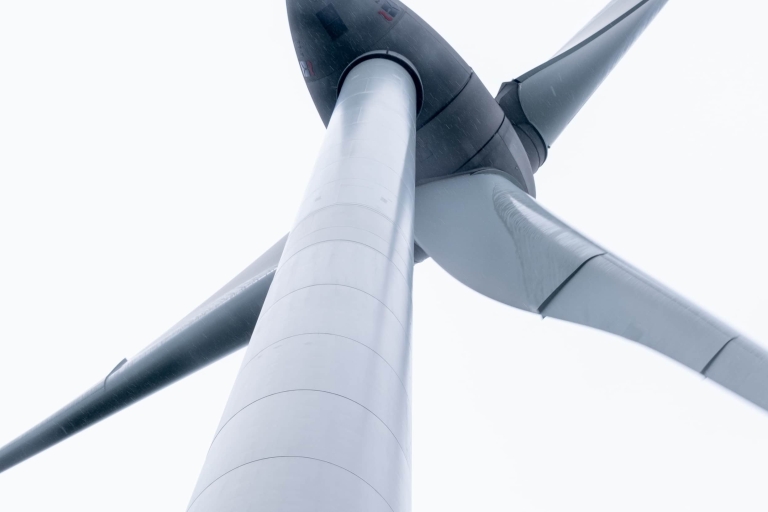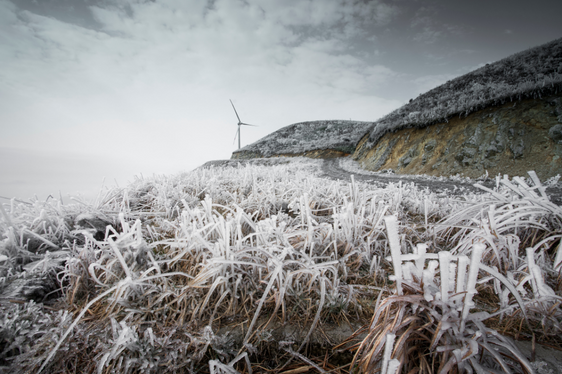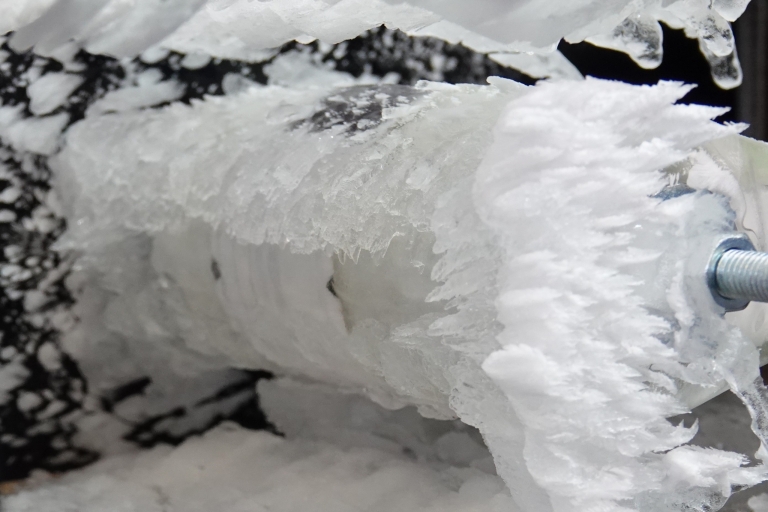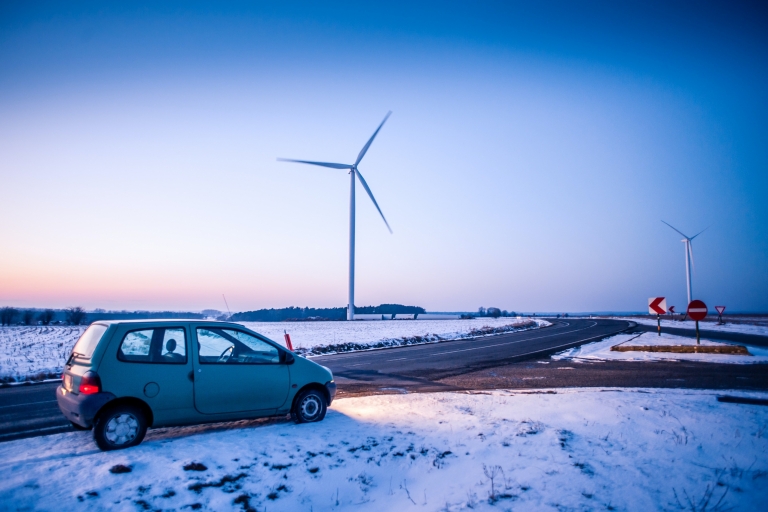TECHNOLOGY | 5 MIN TO READ
Safe through the winter: Ice throw and ice fall on wind turbines
Whitepaper: Optimise your wind turbine by using ice detection
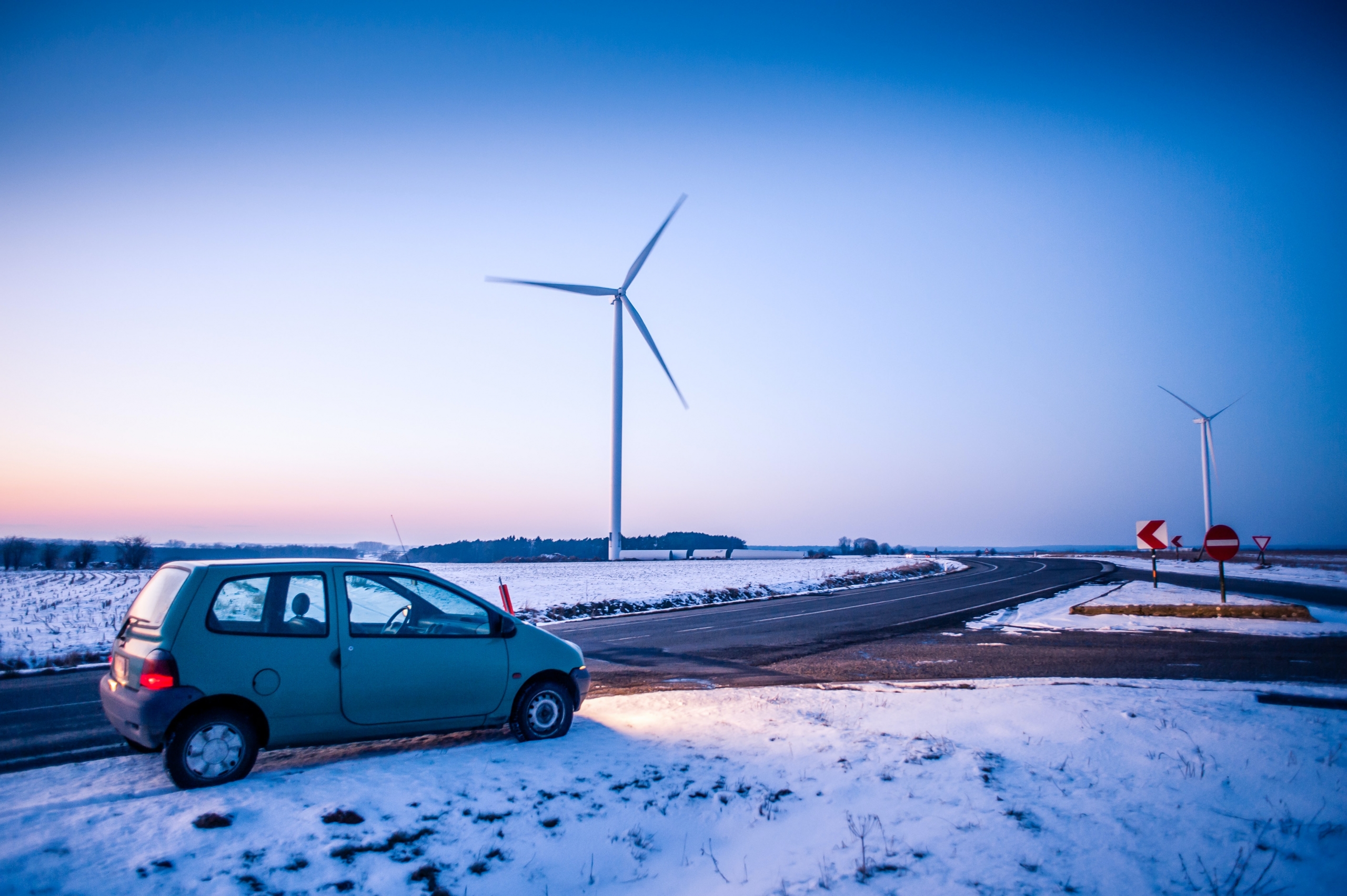
How to ensure safety during icing conditions (especially with regard to ice fall and ice throw) – Ice accumulation on wind turbine rotor blades has a crucial impact on operation and maintenance. Lower return due to aerodynamic imbalances as well as safety of the power plant and its surroundings are of central importance.
Regardless of whether a wind turbine is located next to a highway or in the mountains where skiers and hikers pass by – It should be always ensured that service technicians and any trespasser are safe in any turbine operation mode.
The reliable, safe and beneficial operation of wind turbines requires the use of a number of safety features. In order to ensure safety for all service personal and any trespasser, it is common to integrate a reliable ice detection system into the wind turbine. This makes it possible to stop the wind turbine in the event of any safety-relevant ice accumulation and to restart the wind turbine automatically after detection of the “ice-free” state.
Evaluating risk caused by ice throw from wind turbines
There has been a lot of discussions around the topic of ice accumulation on wind turbines, mainly those near to civilisation. Under the right atmospheric conditions, ice can build-up over a period of time on the wind turbine. While the accumulation of ice is highly dependent on weather conditions, this accumulation can lead to potential risk, namely ice fall and ice throw.
Mitigating the risk of ice throw
When planning wind farm operations, potential impacts are currently mitigated through:
- Evaluation of the wind turbine’s location and establishing exclusion zones based on the turbine height and rotor blade diameter
- Monitoring with ice detection systems to stopp the turbine, if safety relevant ice accumulation occurs on the rotor blade surface
(Some wind turbines also have an integrated rotor blade heating system. With such a rotor blade heater, it is possible to heat the blade in the event of ice build-up, thus ensuring continuous safe operation of the wind turbine even under icing conditions). - Different warning for trespassers and service personal (such as warning lights, signs, etc.)
The applicable regulations and guidelines vary greatly depending on the location and turbine type (depending on hub height and rotor blade diameter). There are locations where an additional system for ice detection (e.g. in addition to a power curve-based ice detection system) is already prescribed before the start of construction.
Safe ice detection system
There are different ice detection systems. Regarding our ice detection systems, for example, ice is directly measured on the surface. In this case, the ice built up can be measured from the beginning (already below 1 mm) and can also be measured in every operation mode, no matter if the wind turbine is rotating or not.
A study of the VGB (VGB research project 401; Excerpt presented at Winterwind 2021) confirmed, that our ice detection system is the first system which detects ice compared to three other vibration-based systems. These enables highest safety even during turbine stop and idling. In the following figure it can be seen that our system is the first system to detect ice, as it is measuring directly on the rotor blade surface.
More differences of these ice detection systems are explained in our Whitepaper – Ice detection to optimise your wind turbine and the article Types of ice detection systems.
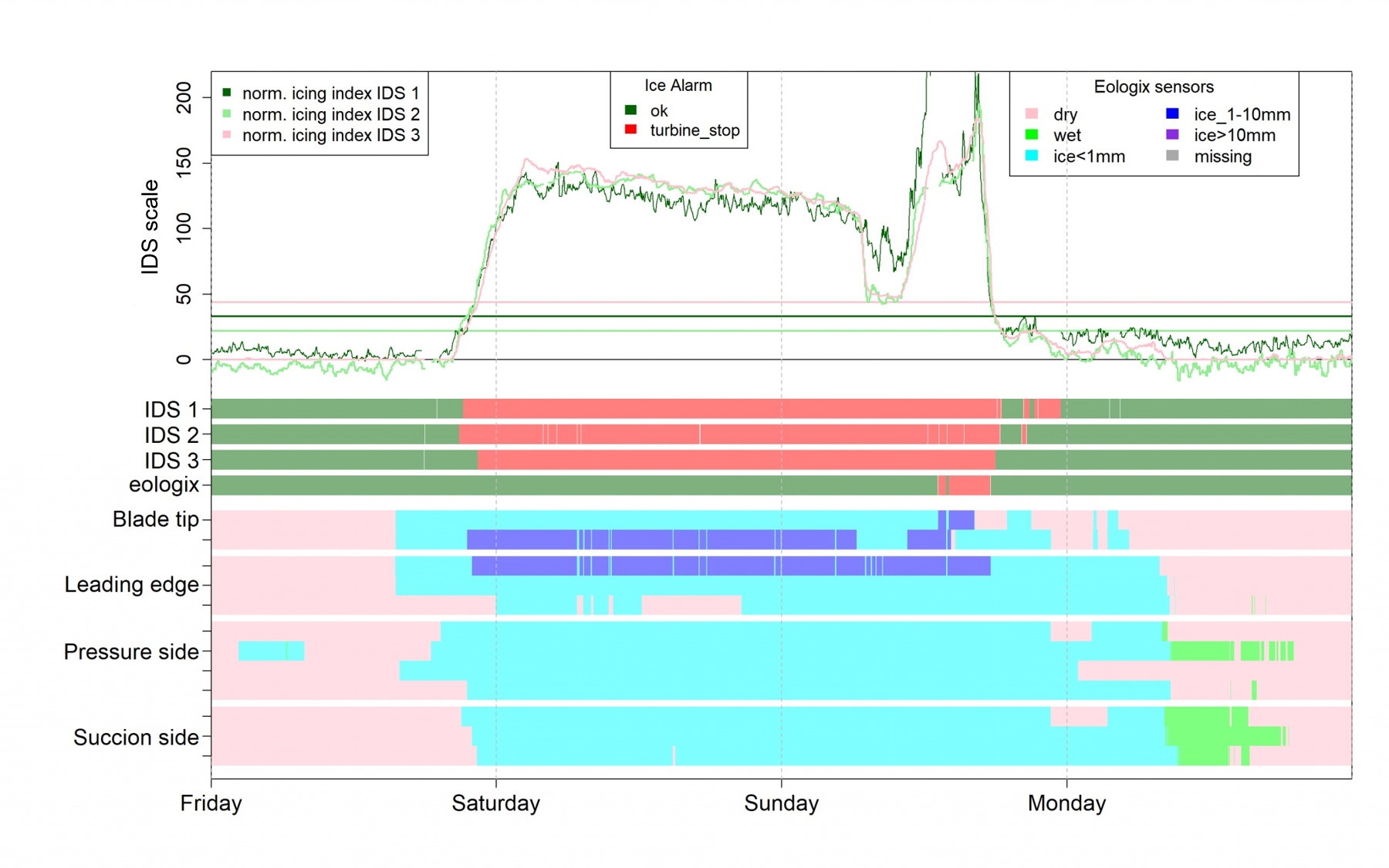
Example of an ice event (VGB research project 401; Excerpt presented at Winterwind 2021) – Public report to be published soon (Source: Comparison of four blade-based ice detection systems installed on the same turbine, Paul Froidevaux, Meteotest AG, Winterwind 2021, April 20, 2021)
Ensuring against ice throw and ice fall
Ice fall and ice throw from wind turbines (WT) is an important aspect at nearly all sites with icing conditions. Icing conditions bring a variety of risks, including power loss, ice fall and shedding, and rotor imbalance. The risk of ice fall and ice throw should also be assessed at sites with only a few icing events per year, especially if the presence of people cannot be ruled out at the site of the wind turbine even with a high probability (e.g. due to hiking trails, ski regions, service personnel, etc.).
How eologix systems ensure against ice fall and ice throw
eologix sensor systems prevent the risk of ice throw by detecting ice directly on the rotor blade surface – the product signals a safety relevant stop at icing. Depending on the used system, we also offer an automatic restart system eologix:restart, which restarts the turbine after an “ice-free” signal. With eologix:heat we do also offer measures for the realisation of preventive heating solutions (i.e. rotor blade heating during operation to avoid icing of the blades at all).
eologix reliably detects ice in any site condition and at any turbine operation mode, even below 3m/s while idling or when the turbines are stopped (e.g. locked rotor state). This enables full safety during any operation in icing conditions. This enables safety against ice throw (e.g. by stopping the turbine) and also ice fall (as all our systems detect icing also when the turbine is idling or stopped, e.g. by switching on warning lights).


